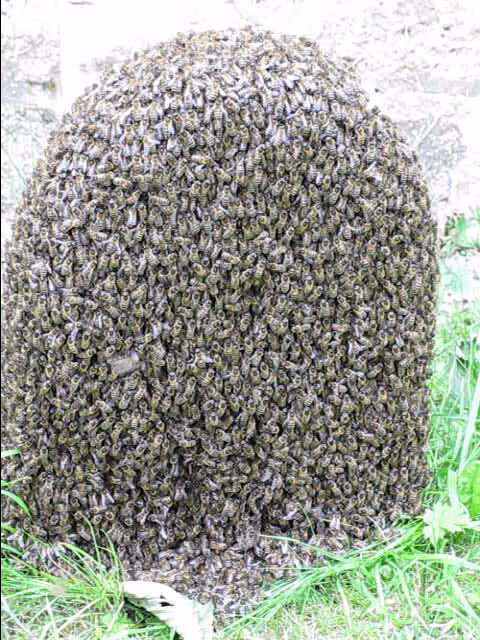D&D Monster of the Week- CIFAL

It is odd that I have never mentioned the colonial insect-form artificial life critter before as it is the only normal sized insect monster in AD&D 1e. But then, it is boring and was never updated to the second and third editions (and I doubt the fourth). Which is sad because the name implies so much.
The cifal is in the Fiend Folio and is a 2 hit die humanoid mass of insects. The stats say 8 or 10 hit dice, but reading the description shows that they only have 2 hit dice and use the other 8 as back up in the form of 2 hit points of healing per round. What insects make them up is not mentioned. They have wings as the swarm flies away if the 2 hit dice are slain. So they can't be ants, fleas, lice, silverfish and some lesser known families or species. As I said, boring.
So, what nifty insect powers can make them not boring. Here are some that are based on actual insect abilities. Some are entirely mundane and others are pumped up to make them worthwhile additions. They are taken from a wide variety of insects and so the species that makes up cifals should have only a few of these or there should be multiple insect species in each cifal.
Offensive:
The insects could be toxic or steal toxins from a plant, mineral or monstrous source. Seeing a cifal kill a giant scorpion should worry the PCs.
They may drain blood like mosquitos and black flies and if so, they probably also spread disease.
Stink bugs produce a nasty odor, so why not something like Stinking Cloud or even a low grade Cloudkill?
Many insects produce silk and this could be represented by a limited Web, one that only affects those struck by the cifal.
Some insects are known for their amazing abilities to chew through most organic substances. This could result in more damage (2d8 or even 4d6), destruction of gear or both.
And then there is the nasty stuff- parasitoid implantation (larvae growing in the victim, turning them into a new cifal), gall production (same for plants) and pheromones. The last could mean control other other creatures and possibly even animate plants, though I wouldn't make it equal to a treant's ability to animate trees. Or it may be able to draw insects from the environment and heal faster.
Defensive:
Insect senses are so good that they only way to evade a cifal is to be ethereal. Invisibility (or darkness) is a joke because they would still hear and smell the character and even better spells wouldn't be able to evade their ability to sense vibrations (tremorsense).
Insects are very good at camouflage and mimicry so the cifal may be in plain sight and the party may not even be able to tell what it is until it is too late.
Burrowing may be a Zerg thing, but insects (actually worms) did it first. Killing a cifal may be very difficult as it can just burrow into the ground or another nearby surface and hide while healing.
So even small insects can be a serious hazard if they work together and use what evolution gave them. As for the origin of the cifal, Pathfinder has a nifty insect-like monster in the Bestiary 3, the azruverda, that could use cifal servants. Or they could be the start of an alien invasion, be it from the stars or another plane.




